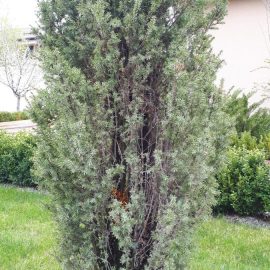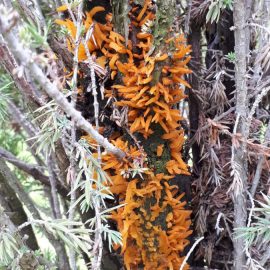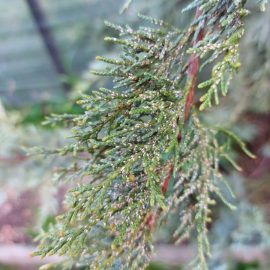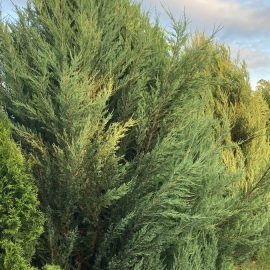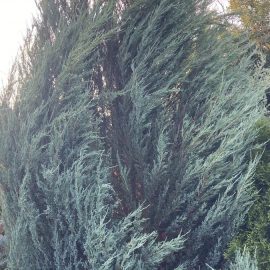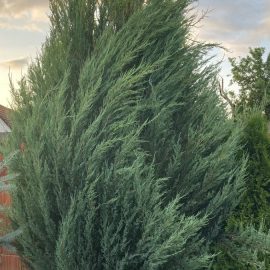Juniper, planting guide and care work
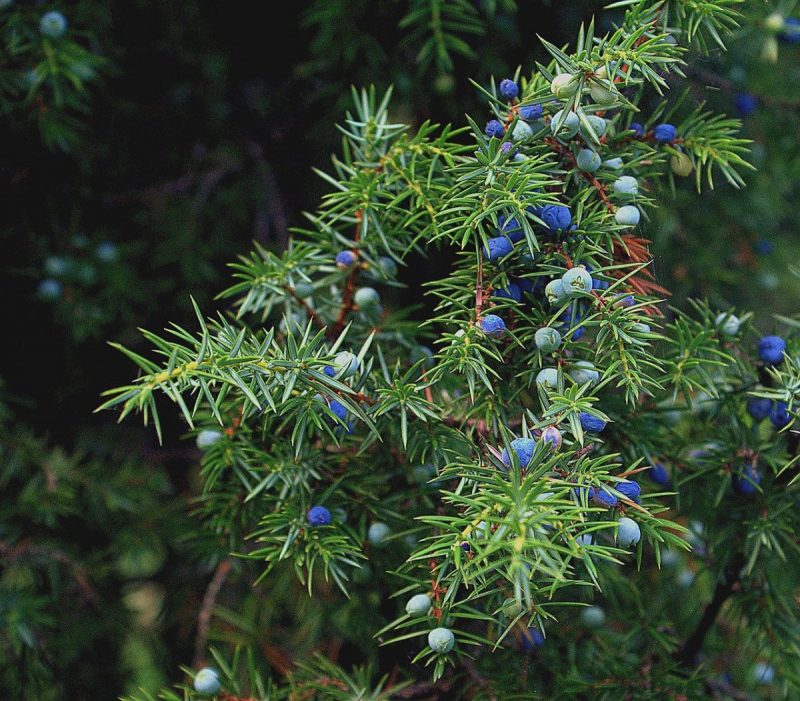
Juniper (Juniperus) is a genus in the Cupressaceae family, comprising about 55 species of coniferous trees and shrubs, native to the northern hemisphere and the subequatorial area of Africa. They can also be found at higher altitudes, up to 4900 m, in Tibet and the Himalayas. They have variable heights (from 1 to 40 m) and different shapes, with a columnar crown, strongly branched. The leaves are persistent, have an acicular shape in young specimens, and are scaly in mature ones. They have monoecious and dioecious inflorescences. The cones are indehiscent, fleshy, fruit-like. They can be found in parks and gardens, as solitary specimens, or in groups. Creeping species are often preferred for ground covering, in rock gardens or slopes.
Species and cultivars
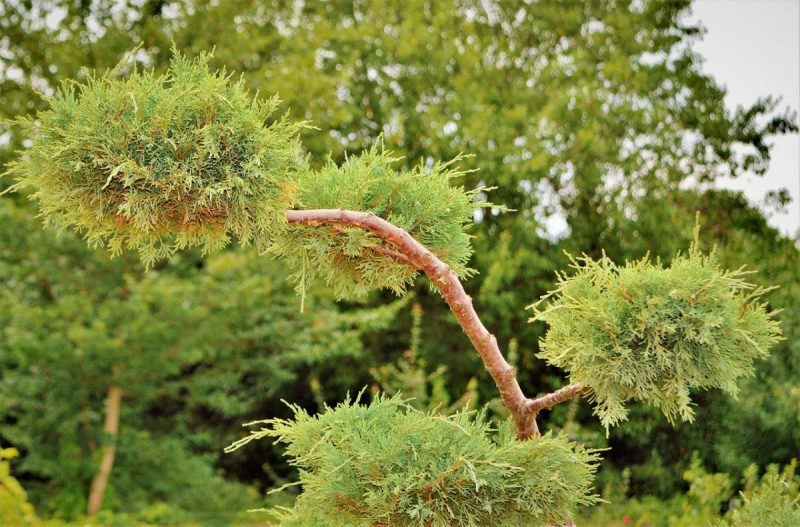
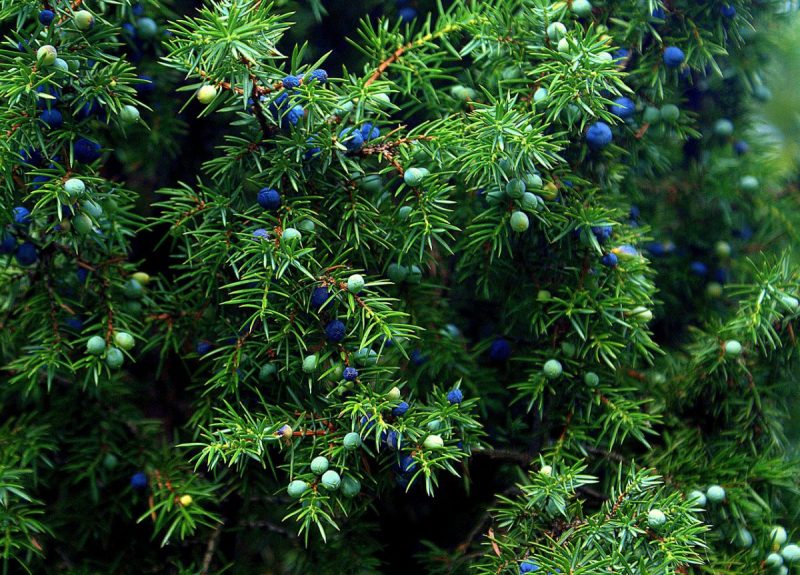
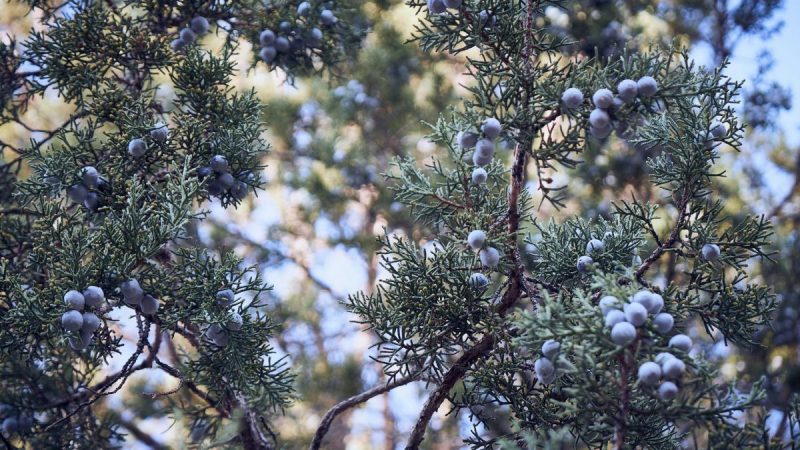
Juniperus communis (common juniper)
It is a spontaneous species in some countries, being found especially in mountainous areas. It has the shape of a shrub, grows to a height of 5 m, and forms a thick, bushy crown. The leaves are acicular and grow in groups of 3, are light green, with a blue line on the topside. The cones are abundant, have a dark blue color at maturity, and have the appearance of berries. Cultivars:
- ‘Hibernica’ – it has a columnar appearance, with straight, upwards-oriented branches.
- ‘Gold Cone’ – it has a columnar appearance and yellow leaves.
- ‘Arnold’ – it has a pyramidal crown, with blue foliage.
- ‘Repanda’ – a creeping shrub, with a height of 30 cm and green-gray foliage.
Juniperus virginiana (Virginian juniper)
It is a species native to North America. It is a tree that can reach up to 30 m in height, has a straight trunk, a wide pyramidal crown. The leaves are scaly, small, with a strong characteristic smell. The fruits are fleshy, ovoid in shape, and colored in blue-silver. Cultivars:
- ‘Pendula’ – with drooping branches.
- ‘Glauca’ – it has an elegant appearance, with a gray-blue foliage.
- ‘Skyrocket’ – it has a narrow crown with blue foliage.
Juniperus sabina (savin juniper)
It is a native species, with spontaneous growth in the mountainous regions of the Eastern Carpathians. It has the shape of a shrub, it can reach a height of 3 m, with creeping branches. The leaves have a green-blue color and are both acicular and scaly. The cones are spherical, have the appearance of berries, and are colored in black-blue.
- ‘Tamariscifolia’ – very small size, about 20-50 cm, with horizontal tendrils.
- ‘Rockery Gem’ – short, with yellow leaves.
Juniperus chinensis (Chinese juniper)
Originally from Northeast Asia, with the shape of a shrub or a tree, it can reach a height of 20 m. It develops a pyramidal or columnar crown, with scaly and acicular leaves, with two white lines on the underside. The cones are spherical, black-blue. Cultivars:
- ‘Pfitzeana Aurea’ – with drooping branches.
- ‘Argenteo-Variegata’ – the tips of the tendrils are white.
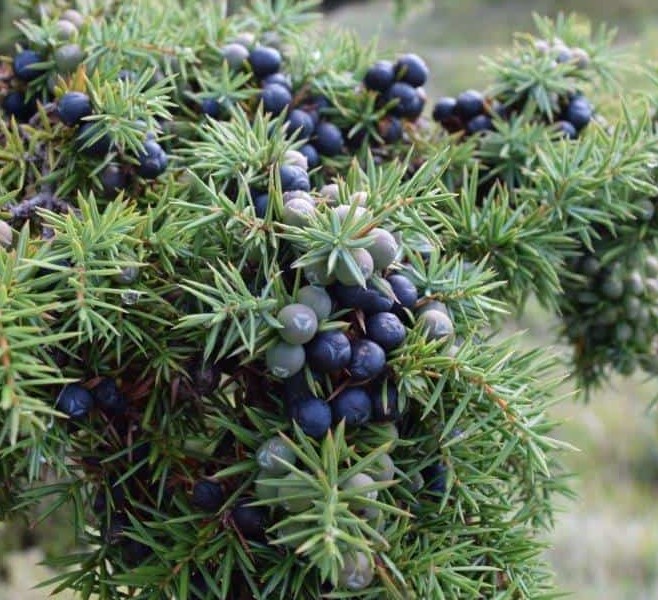
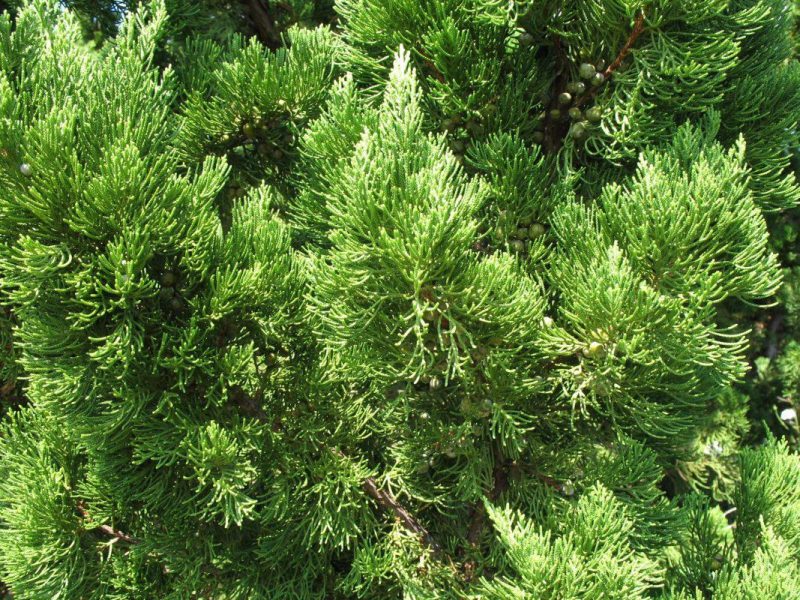
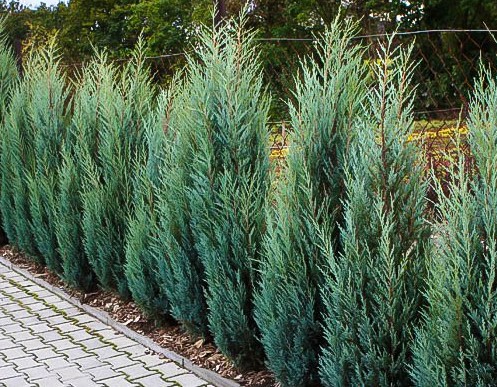
Juniperus horizontalis (the creeping juniper)
It is a fast-growing shrub, with a maximum height of 1 m and a width of 3-4 m. The branches grow horizontally, have acicular leaves colored in green-blue.
Juniperus squamata
It is a species native to Central Asia, with the shape of a shrub and heights of up to 10 m. It has a short trunk, more branched at the base, with acicular foliage, colored in green-blue. The cones are spherical, black, glossy. Cultivars:
- ’Meyeri’ – with silver-blue acicular leaves, which fall with the aging of the plant.
- ‘Blue Star’ – with compact, blue foliage.
Juniperus procumbens
It is a species native to Japan, with the appearance of a compact bush, with a maximum height of 50 cm. It has a slow growth, acicular leaves, and dark brown fleshy fruits.
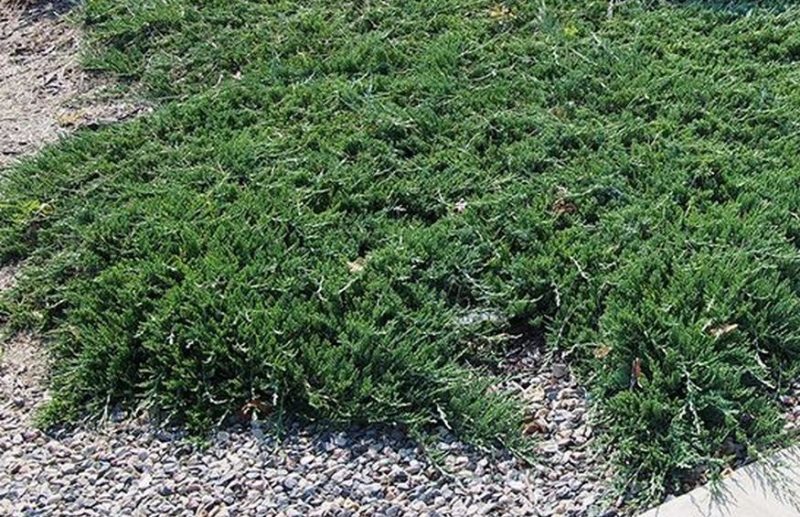
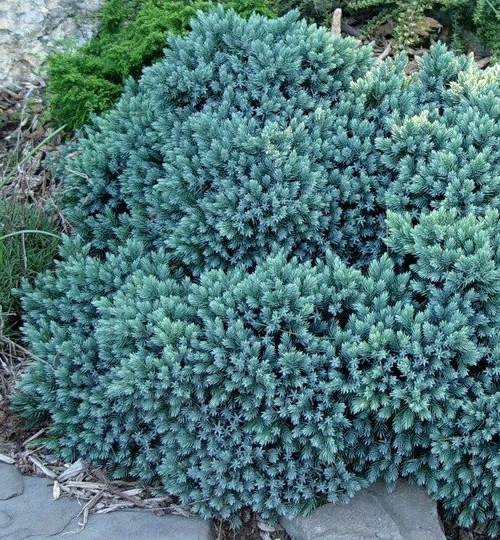
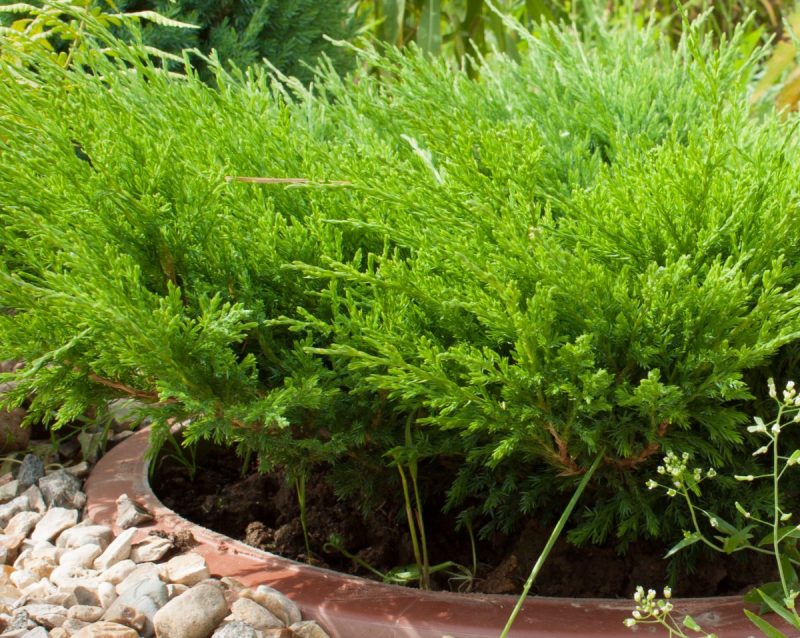
Environmental conditions
Light. In general, Juniper species do not require special light conditions, but J. virginiana, J. chinensis, J. procumbens prefer brighter places.
Temperature. Indigenous Juniper species have better resistance to frost because they are adapted to the temperate continental transitioning into an oceanic climate. The species J. virginiana, J. squamata can be affected by very low temperatures, which cause the drying of the tips and browning of the leaves. Most are resistant to drought and dry air.
Soil. Junipers do not have specific soil requirements. However, they grow well in calcareous, moist, permeable soils.
Pruning
Every year, in spring, cuts should be made to correct the plant’s shape. The shoots mustn’t be cut in the areas of new growths.
Recommended products
-
You can find products on a different store
Change Store -
You can find products on a different store
Change Store -
You can find products on a different store
Change Store -
You can find products on a different store
Change Store -
You can find products on a different store
Change Store -
You can find products on a different store
Change Store -
You can find products on a different store
Change Store -
You can find products on a different store
Change Store -
You can find products on a different store
Change Store -
You can find products on a different store
Change Store -
You can find products on a different store
Change Store -
You can find products on a different store
Change Store -
You can find products on a different store
Change Store -
You can find products on a different store
Change Store -
You can find products on a different store
Change Store -
You can find products on a different store
Change Store -
You can find products on a different store
Change Store -
You can find products on a different store
Change Store -
You can find products on a different store
Change Store -
You can find products on a different store
Change Store -
You can find products on a different store
Change Store -
You can find products on a different store
Change Store -
You can find products on a different store
Change Store -
You can find products on a different store
Change Store
Fertilization
To stimulate the rich growth of trees and shrubs, during the vegetative growth period, it is recommended to apply specific fertilizers.
Recommended products
-
You can find products on a different store
Change Store -
You can find products on a different store
Change Store -
You can find products on a different store
Change Store -
You can find products on a different store
Change Store -
You can find products on a different store
Change Store -
You can find products on a different store
Change Store -
You can find products on a different store
Change Store -
You can find products on a different store
Change Store -
You can find products on a different store
Change Store -
You can find products on a different store
Change Store -
You can find products on a different store
Change Store -
You can find products on a different store
Change Store -
You can find products on a different store
Change Store -
You can find products on a different store
Change Store -
You can find products on a different store
Change Store -
You can find products on a different store
Change Store -
You can find products on a different store
Change Store -
You can find products on a different store
Change Store -
You can find products on a different store
Change Store -
You can find products on a different store
Change Store -
You can find products on a different store
Change Store -
You can find products on a different store
Change Store -
You can find products on a different store
Change Store -
You can find products on a different store
Change Store
Planting
It can be done in spring or autumn, during the vegetative dormancy period, at temperatures above 5° C, if the soil is not frozen and there is no danger of frost. Make sure you buy the planting material from authorized nurseries. Immediately after planting, water abundantly, then keep the soil moist.
Propagation
Junipers can be propagated through seeds, cuttings, or layering.
- the seeds have to be harvested at maturity (in winter) and sown in spring. Because germination can last up to a year, it is not a commonly used method.
- propagation through cuttings has to be done in greenhouses or nurseries; rooting is very slow.
- Chinese layering is recommended for creeping species.
Diseases and pests
Diseases that can affect Junipers are crown gall disease, Berckmann’s Blight which leads to the drying of plants. The pests that can infest Junipers are aphids, European fruit lecanium, and various species of caterpillars.
Recommended products
-
You can find products on a different store
Change Store -
You can find products on a different store
Change Store -
You can find products on a different store
Change Store -
You can find products on a different store
Change Store -
You can find products on a different store
Change Store -
You can find products on a different store
Change Store -
You can find products on a different store
Change Store -
You can find products on a different store
Change Store -
You can find products on a different store
Change Store -
You can find products on a different store
Change Store -
You can find products on a different store
Change Store -
You can find products on a different store
Change Store -
You can find products on a different store
Change Store -
You can find products on a different store
Change Store -
You can find products on a different store
Change Store -
You can find products on a different store
Change Store -
You can find products on a different store
Change Store -
You can find products on a different store
Change Store -
You can find products on a different store
Change Store -
You can find products on a different store
Change Store -
You can find products on a different store
Change Store -
You can find products on a different store
Change Store -
You can find products on a different store
Change Store -
You can find products on a different store
Change Store
In addition:
- the drying of the branches inside the crown (near the trunk) is a natural phenomenon, caused by the low amount of light that passes through the branches and reaches the trunk. In mature specimens, this condition is more visible, but it does not pose any danger.
- the cones mature differently depending on the species (after a year, two or even three).














































































































































































































































































































































































































































